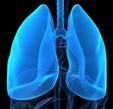Advertisment
Ozone raises risk of acute respiratory disease syndrome in critically ill patients

by Bruce Sylvester: Ozone exposure appears to be associated with acute respiratory disease syndrome (ARDS) in some critically ill patients, according to research published on Dec. 17, 2015 In the American Journal of Respiratory Critical Care.
“Long-term ozone exposure is associated with development of ARDS in at-risk critically ill patients, particularly in trauma patients and current smokers. Ozone exposure may represent a previously unrecognized environmental risk factor for ARDS,” lead investigator Lorraine Ware, MD, professor of medicine at Vanderbilt University in Nashville, Tenneesee and colleagues reported.
As background, the authors noted that ARDS is a life-threatening inflammatory lung illness already shown in prior research to be associated with cigarette smoking. The new study is the first to show an ozone-related onset risk.
The investigators enrolled 1,558 critically ill patients in the prospective observational study. Each subject lived less than 50 km from an air quality monitor and also had an ARDS risk factor at enrollment.
They assessed ozone exposure using weighted average of daily levels of ozone from the closest monitors, for the 3 years before enrollment.
They used standard analytical models to evaluate data for associations between pollutant exposure and appearance of ARDS, while also controlling for age, race, sex, smoking, alcohol, insurance status, rural vs. urban residence, distance to study hospital and APACHEII (Acute Physiology and Chronic Health Evaluation II).
They reported that 563 subjects had ARDS. A diagnosis of ARDS increased significantly with increasing prior ozone exposure, 28% in the lowest exposure quartile vs. 32%, 40% and 42% in the 2nd, 3rd and 4th quartiles, respectively (P<0.001.)
The association between ARDS and prior ozone exposure was greatest among trauma patients (n=552).
They noted, “Ozone was significantly associated with ARDS only in current smokers and not in non-smokers.”
Ware added, “The generalizability of this most recent study is enhanced given the large and heterogeneous cohort we had at our disposal. However, we acknowledge that future studies need to replicate the findings in more diverse geographic samples so that we may more confidently recommend guidelines for reducing ozone exposure and ARDS risk among this vulnerable group of patients.”





